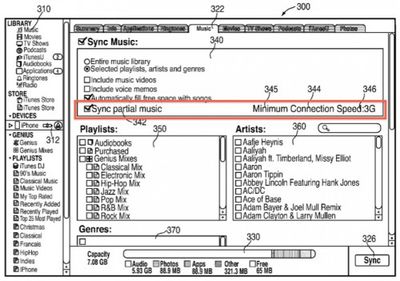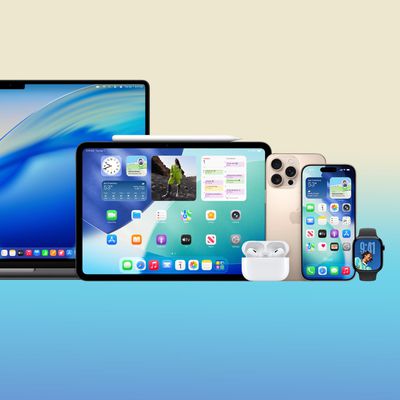Apple's Music Streaming Service to Eliminate Buffering Lag With Locally-Stored Snippets?

As noted by AppleInsider, the U.S. Patent and Trademark Office today published a patent application from Apple describing a system for eliminating delays in streaming media by storing small portions of the content locally on a user's mobile device. The content covered in the patent application, which is entitled "Local Storage of a Portion of Streamed Media Items" and was filed in November 2009, is particularly relevant given claims that Apple is on the verge of rolling out a cloud-based music storage service.
This invention is directed to playing back streamed media items using an electronic device. In particular, this is directed to locally storing one or more clips corresponding to a media item such that the clips can be immediately played back in response to a user request to play back the media item. While the clips are played back, the electronic device can retrieve the remaining segments of the media item from the user's media library as a media stream over a communications network. Once the playback of the clip is complete, the electronic device can seamlessly switch playback to the media stream received from the user's library. The electronic device can authenticate with the remote library using any suitable approach, including for example one or more passwords and tokens.
In essence, local storage requirements can be significantly reduced by keeping only a few seconds' worth of each audio or video file on the device itself. That content could begin playing immediately upon selection by the user as the remainder of the requested file is streamed in the background and seamlessly appended onto the locally-stored portion. The solution seeks to eliminate lag that can be generated by a streaming-only solution as the device builds an initial buffer of content to ensure smooth playback.
Among the figures included in the patent application is a schematic of an iTunes window showing music syncing preferences for an iPhone where a user can select whether or not to store snippets locally and other options such as the minimum connection speed required by the user to take advantage of the streaming capabilities, thus helping the system determine how much of the content needs to be stored locally. Remote storage of media could be deployed on any of a number of sources, including the user's own home computer, a central server, or directly from a marketplace such as Apple's iTunes Store.
Popular Stories
You'd think things would be slowing down heading into the holidays, but this week saw a whirlwind of Apple leaks and rumors while Apple started its next cycle of betas following last week's release of iOS 26.2 and related updates.
This week also saw the release of a new Apple Music integration with ChatGPT, so read on below for all the details on this week's biggest stories!
Top Stories
i...
Apple hasn't updated the Apple TV 4K since 2022, and 2025 was supposed to be the year that we got a refresh. There were rumors suggesting Apple would release the new Apple TV before the end of 2025, but it looks like that's not going to happen now.
Subscribe to the MacRumors YouTube channel for more videos.
Bloomberg's Mark Gurman said several times across 2024 and 2025 that Apple would...
Next year's iPhone 18 Pro and iPhone 18 Pro Max will be equipped with under-screen Face ID, and the front camera will be moved to the top-left corner of the screen, according to a new report from The Information's Wayne Ma and Qianer Liu.
As a result of these changes, the report said the iPhone 18 Pro models will not have a pill-shaped Dynamic Island cutout at the top of the screen....
Since the beginning of December, Apple has been pushing iPhone users who opted to stay on iOS 18 to install iOS 26 instead. Apple started by making the iOS 18 upgrades less visible, and has now transitioned to making new iOS 18 updates unavailable on any device capable of running iOS 26.
If you have an iPhone 11 or later, Apple is no longer offering new versions of iOS 18, even though there...
There has been a whirlwind of rumors over the last few days, sourced from leaked internal software designed for the iPhone and the Mac, and news sites like The Information. Below, we have a quick recap of everything we've heard this week, which serves as a guide to Apple's product plans in 2026 and beyond.
We've organized the info by likely release date, though there are some products that...
Apple is significantly increasing its reliance on Samsung for iPhone memory as component prices surge, according to The Korea Economic Daily.
Apple is said to be expanding the share of iPhone memory it sources from Samsung due to rapidly rising memory prices. The shift is expected to result in Samsung supplying roughly 60% to 70% of the low-power DRAM used in the iPhone 17, compared with a...
Italy's Competition Authority (AGCM) has imposed a €98.6 million ($116 million) fine on Apple over its App Tracking Transparency feature.
Since the release of iOS 14.5 in April 2021, Apple has required apps to ask for permission before tracking a user's activity across other apps and websites for personalized advertising, as part of a feature named App Tracking Transparency. If a user...





















